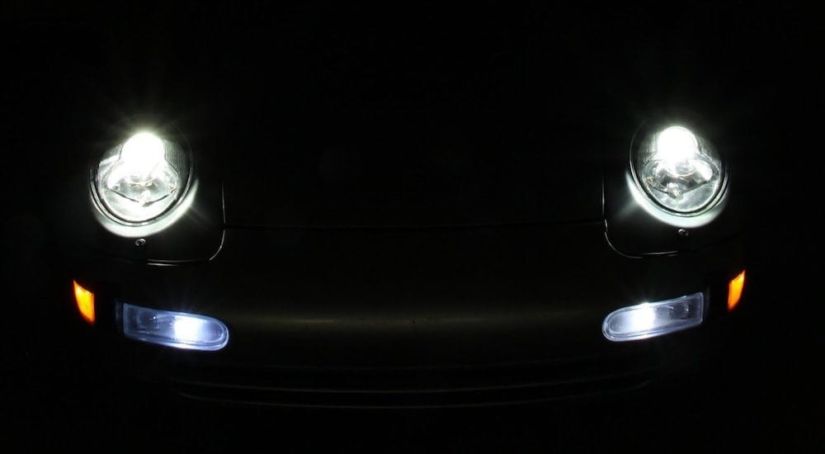Every car brand is seemingly competing to see what innovative feature they can include in their upcoming vehicles. Over the years, we’ve seen this technology evolve dramatically, and many drivers find it hard to imagine a driving experience that doesn’t include radio, technology, or other applicable amenities.
Of course, years ago, engineers had seemingly yet to perfect these various technological inclusions. In other words, they produced a number of failed technologies that proved to be more hassle than convenient. It may be unfair to zero out these specific inclusions; after all, someone had to try (and subsequently fail) in order to understand that these functions actually didn’t work. However, in some instances, we’ve really got to wonder what the engineers were truly thinking.
Below, we’ve explored five of the worst automotive ideas of all time. While you probably won’t see these features included in any cars for sale in Cincinnati, you’ll at least know what inclusions you should be on the lookout for…
Hard-to-Reach Oil Filter
Most of us aren’t automotive experts, but that doesn’t mean that we can’t perform some of the most basic maintenance on our car. This would usually include the fuel filter, which is usually located right near the fuel tank underneath your ride. However, for reasons that are basically unknown, Mazda decided to relocate the position of this part in their third-generation RX-7… leading to numerous hassles for owners.
While owners probably anticipated that they’d have to get a bit dirty as they crawled under their car to install or repair the filter, they probably didn’t anticipate the ordeal that accompanied the RX-7. As Matt Cramer of Bangshift.com (via Jalopnik.com) writes, the vehicle’s rear suspension basically had to be taken apart if owners wanted to access that “cleverly-located” filter and the accompanying annoyance meant that many owners just ignored the required maintenance. This ultimately led to compromised engines, leading to even more hassles (and financial obligations).
Dimming Headlights
Nowadays, this is a rather common inclusion in most new cars. This feature is supposed to help your fellow driver, as the headlights will automatically adjust their brightness when another vehicle is about to drive past. This prevents these individuals from being blinded, keeping you both out of harm’s way.
However, as Michael Ballaban of Jalopnik.com explains, this technology wasn’t always reliable. Rather, the “auto-dimness” was rather inconsistent and would activate in odd circumstances. One reader had to tolerate this inclusion, and they explained all of the annoyances that accompanied this feature:
“I cleaned mine and hooked it up just to see how it would work – they answer was, it dimmed the lights after the oncoming driver would be blinded. Also it would sometimes just flip the high beams on and off when going down lighted streets.”
Ultimately, the system wasn’t only delayed, but it also failed to differentiate between natural light, street lights, and car lights. I haven’t had much experience with this specific feature, but I can only assume that present-day drivers are having similar issues with the current technology.
Digital Dashboard
We’re sure you’re familiar with all of the technological amenities that are included in today’s vehicles. With the simple sound of your voice, you can access a host of information regarding your vehicle. Whether you want clarity on fuel efficiency, speed, or even vehicle diagnostics, you cant easily pull up this information via the accompanying touchscreen or driver information unit.
However, back in the 1980s, this technology was a bit more primitive. Rather, these information centers resembled a knock-off Atari game as opposed to actual “technology.” As opposed to your normal speed gauge, these units usually included a numerical speed rating, but this number proved to be neither consistent nor accurate. Engineers also admirably included a function that could determine how much fuel was remaining in the tank. Unfortunately, instead of alerting the driver of how much fuel they had left, they used a bizarre “bar system,” forcing drivers to calculate how many gallons of fuel were the equivalent of one specific bar.
Sunroof/Roof Rack Combination
We’re going to give Nissan’s engineers credit when it came to them designing their Xterra. The brand was clearly focused on designing a rugged SUV that could be relied on during any off-roading excursion, explaining why they included clever rook racks. Furthermore, in an attempt to get their customers to appreciate the fresh air, they added a sunroof. Both of these amenities are undeniably worthwhile. However, when you combine the two, it leads to its fair share of problems.
To be more specific, the inclusion of the roof rack meant that drivers couldn’t open their sunroof. No, we’re not kidding, as Patrick Frawley of Jalopnik.com observes that engineers didn’t really consider how these two features would work in tandem. Presumably, if drivers indeed wanted to use their sunroof, they probably had to remove the rook racks, making at least one of the two inclusions basically unusable.
Record Player
We’re so used to listening to the radio or connecting our smartphone to our car’s infotainment system, we quickly forget the technological offerings from decades ago. Well, one of the more innovative inclusions was a built-in record player. While this was a relatively clever inclusion, a record player didn’t prove to be very effective when placed in an automobile, as one reader told Ballaban:
“Don’t forget the Highway Hi-Fi, offered on 1956-1959 Chryslers. Granted, being able to play whatever music you want instead of relying on radio stations is an admirable goal, and given the size of reel to reel tape players in the era, it’s not like they had many options, but this really didn’t work that well at all.
The records had a fairly short useful life since the stylus was designed to press down on them hard to prevent skipping, which then wore out the vinyl in short order. Even with that, a good pothole would still cause a skip, and of course, the record design was proprietary, which meant the range of titles offered was always limited.”



